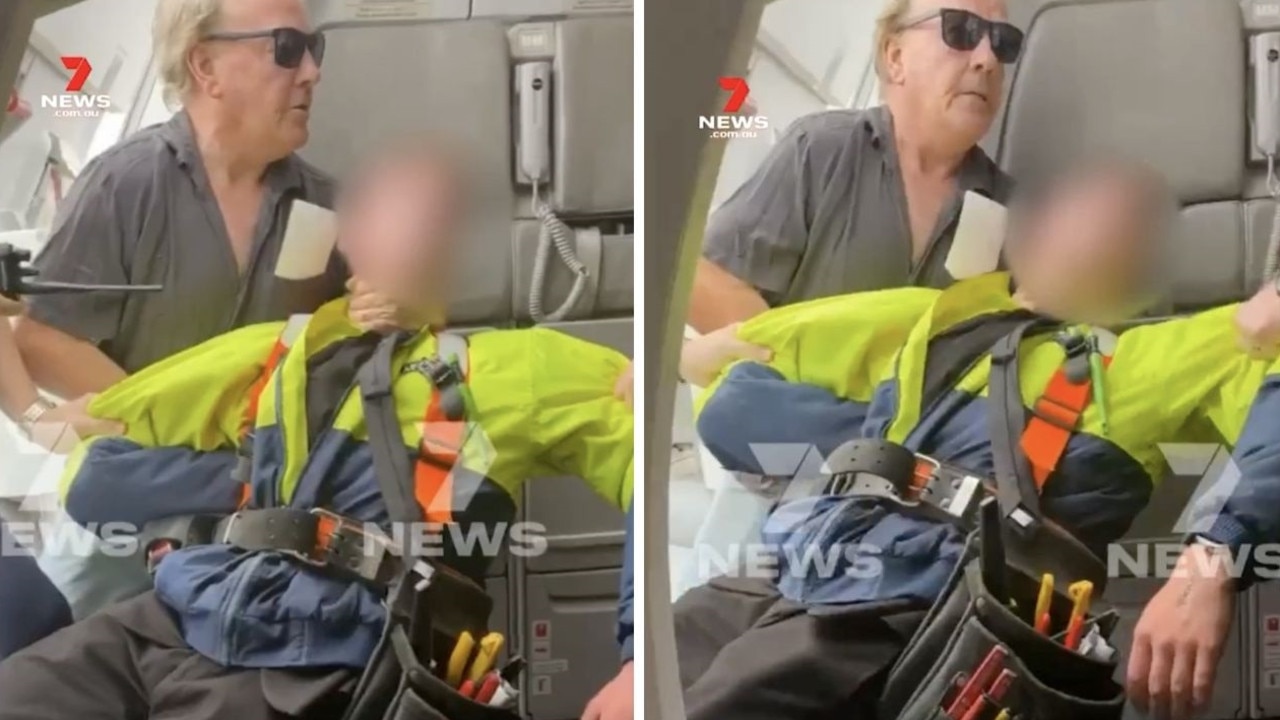Norforce warriors providing first line defence to Australia
Norforce, the Australian Army’s unique reconnaissance and surveillance unit, is a well-kept secret – until now. Journalist Charles Miranda spent 14 days embedded with the troops.
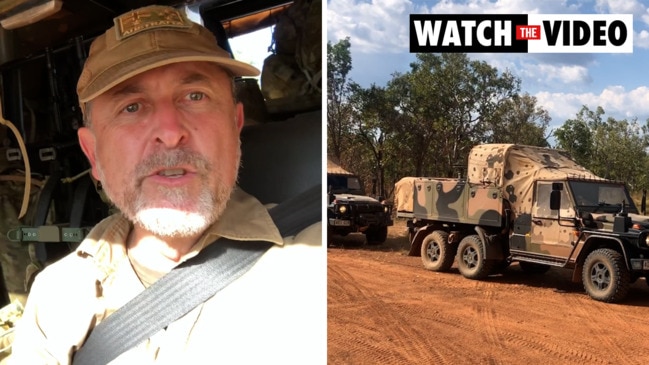
National
Don't miss out on the headlines from National. Followed categories will be added to My News.
As darkness falls, Sergeant Chris Diamond stares distantly out over the termite mound infested rocky red earth scrub then back over to his squad of soldiers setting up camp for the evening.
It’s hot, proper hot, just on 30 degrees at 6pm with a suffocating dead air.
In the distance a cacophony of dingoes howl and Bush Stone Curlews wail seemingly competing with the maddening drone of the clouds of gingery speckled mosquitoes emerging from nowhere but infesting everywhere all at once.
This remote western most point of Northern Territory is both beautiful and bleak, sinister and serene, a sort of haunting Picnic at Hanging Rock scene on which hangs a heavy air of anticipation for what these eerie inhospitable ancient lands might throw up.
“I’m not being funny but if we were to get separated in some way or we can’t get a resupply, these guys will make sure we don’t die of thirst or hunger, it’s that simple,” Sgt Diamond says flatly without a hint of exaggeration, as he nods in the direction of his indigenous troops whose long shadows move briskly as darkness envelopes.
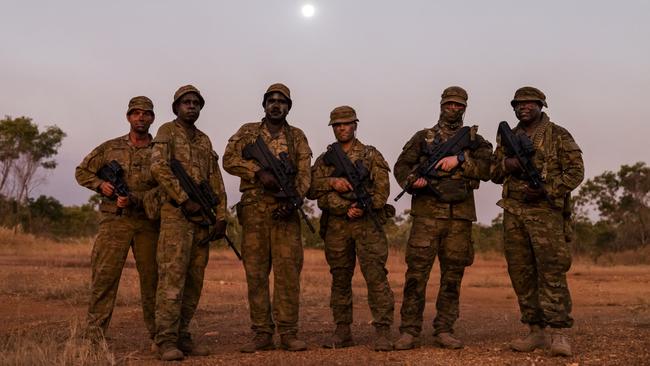
Almost on cue a small fire crackles to life as one of his troop walks out of the scrub carrying a Northern Long Neck Turtle for tonight’s tucker.
In the half-light they might look like any other squad of camouflage clad Army troops on exercise carrying out their bivouac routine but there is nothing ordinary about this largely indigenous army squad.
This is North-West Mobile Force or just Norforce, the most unique and critical surveillance, reconnaissance and military intelligence gathering squads in the Australian Defence Force.
They are little known or appreciated outside of Defence but are considered a vital element of our national security apparatus.
You can have all the hi-tech drones, planes or radar throwing a net over our northern frontiers but it won’t see or hear or be able to stitch together a composite picture of threats or incursions that this squad can do from the ground.
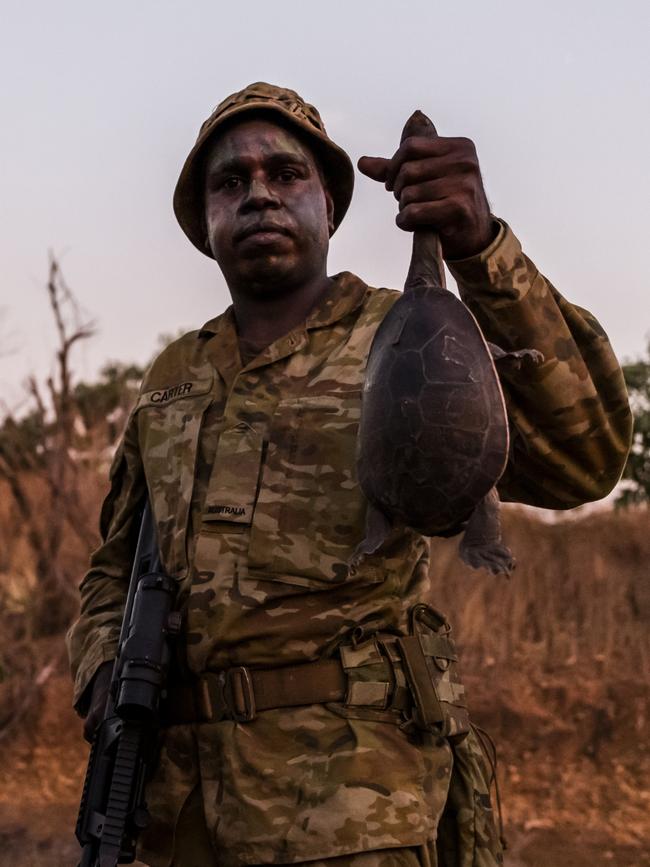
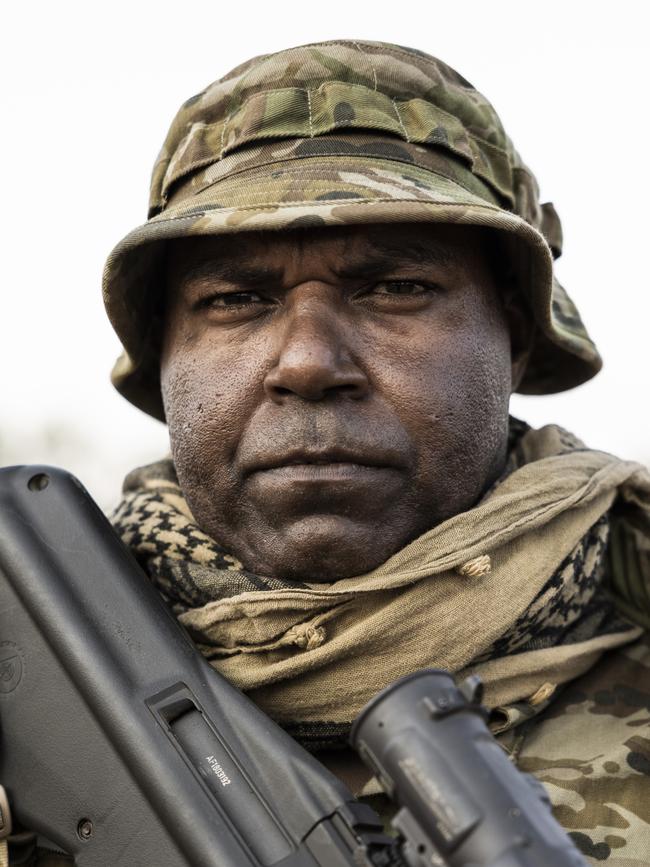
The force, made up significantly of First Nation soldiers, are Australia’s eyes and ears.
They are the first line of detection from the isolated remote north with a proud history that on paper goes back to WW2 but with a culture and skill set passed down through the generations over the centuries that are only now being understood and truly appreciated.
It’s more than bushcraft and survival skills that are being tapped but their instinctive connection to country and community, language and pride that comes from a modern take on a traditional role of clansman warrior.
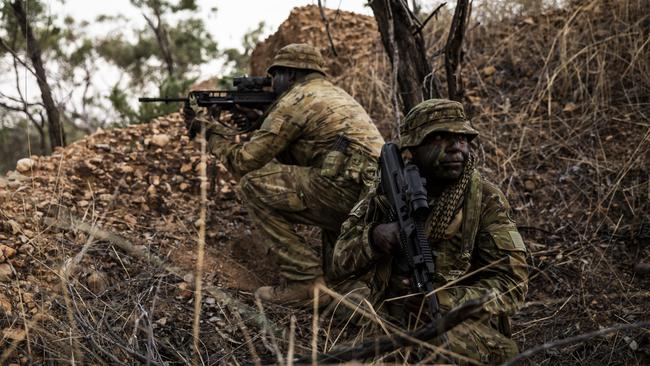
It was for protection of their mob and land and now it’s for all in Australia.
News Corp Australia was invited to be the first media organisation to be allowed to embed with this usually low-profile unit for the entirety of one of their long range patrols over land and sea, to record why this force is so revered in Australia’s north and why today amid the threat of regional coercion, incursion and conflict remains so critical to our national defences.
This is not a training exercise and the dangers they face and work they perform “in the office” are real and carried out discreetly on an almost endless 365 days a year contact and patrol of our north from Western Australia to Queensland in a 1.8 million square kilometres area of operation; the largest patch of any military unit in the world.
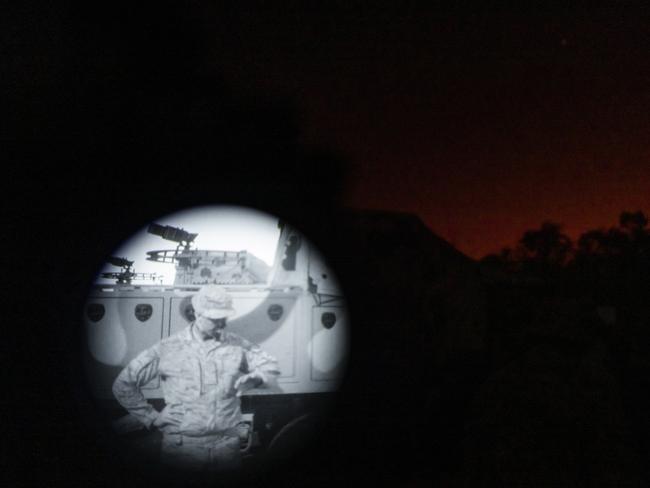
Between the four Regional Force Surveillance Group squadrons, Darwin, Kimberley, Arnhem, Centre and support their area of operations effectively cover 52 per cent of Australia.
This is the real Band of Brothers (and Sisters) you don’t see in the movies and the work they do feeds into the national security cordon that increasingly is having to be flexed like never before.
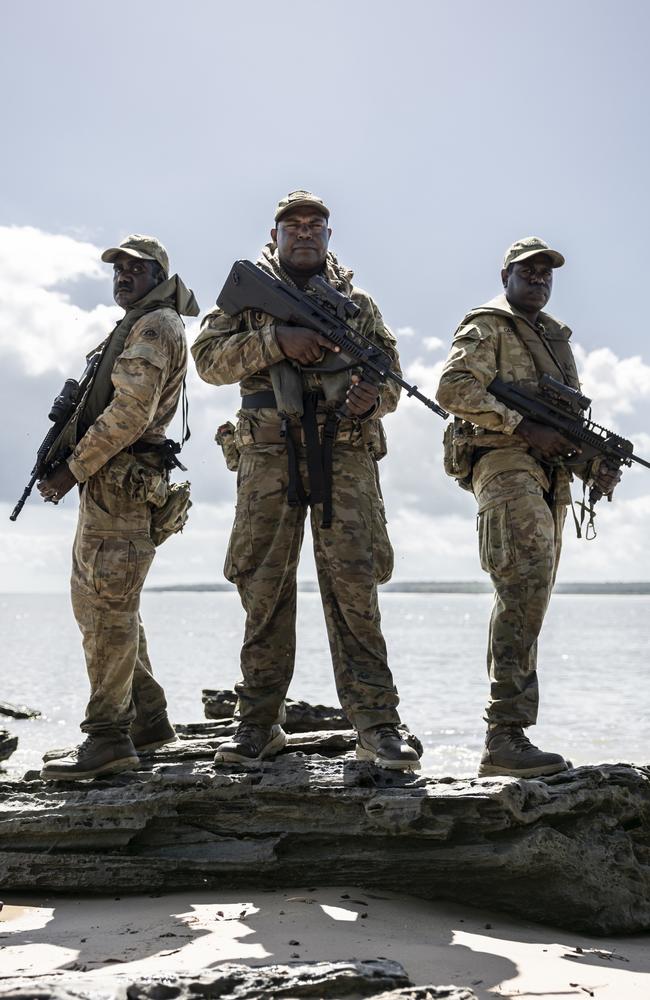
BIRTH OF THE NACKEROOS
In 1977 the Australian Army ran an exercise in the Top End designed around the then Cold War threat possibility of a state based incursion into Australia by a foreign power. The program was dubbed Exercise Long Visual. They invited former soldier Dr Bill Stanner to be an official observer to the operation.
Decades earlier in 1941 it was anthropologist turned Army major Dr Stanner, influenced by Boer War tactics, who visualised a small mobile army ‘made up of men with a bush background and adventurous spirit’ to run surveillance mission amid fears of an imminent invasion by then Japanese forces, particularly after several air attacks on Darwin.
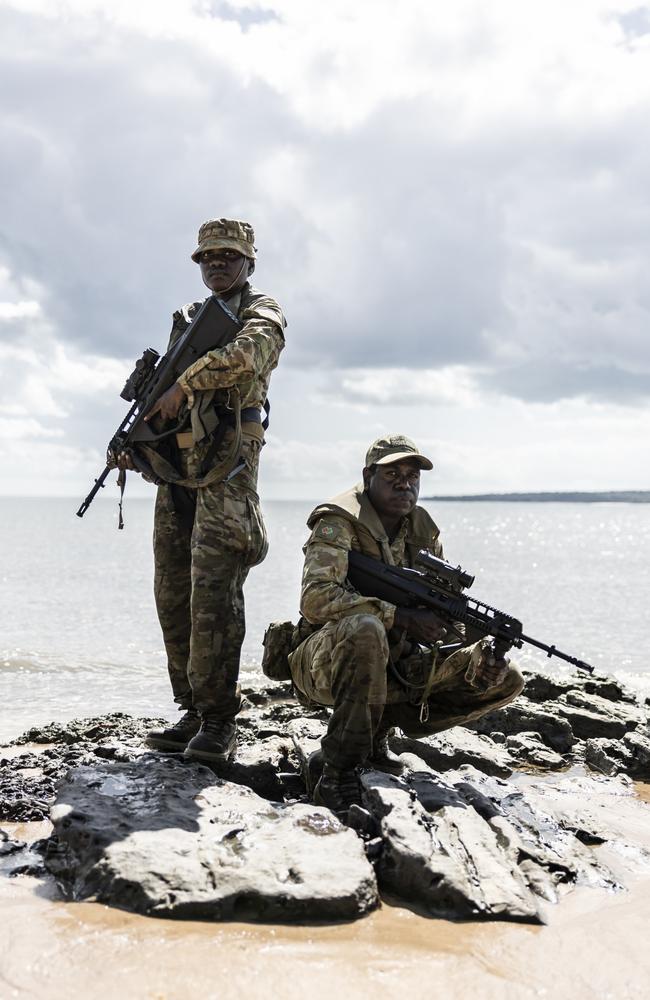
He would create that force, then known as Nackeroos (a word blend of jackaroos and ‘native men’) which operated until the end of the war. Now in the 1970s and the new threat he was asked his thoughts on whether such a force should exist again.
He looked over the exercise maps and remarked to then exercise co-ordinator and SAS Regiment commander Lieutenant Colonel Mike Jeffery – who would eventually become Australia’s 24th Governor-General – that they were almost identical in footprint to the surveillance and reconnaissance missions he ran in World War 2.
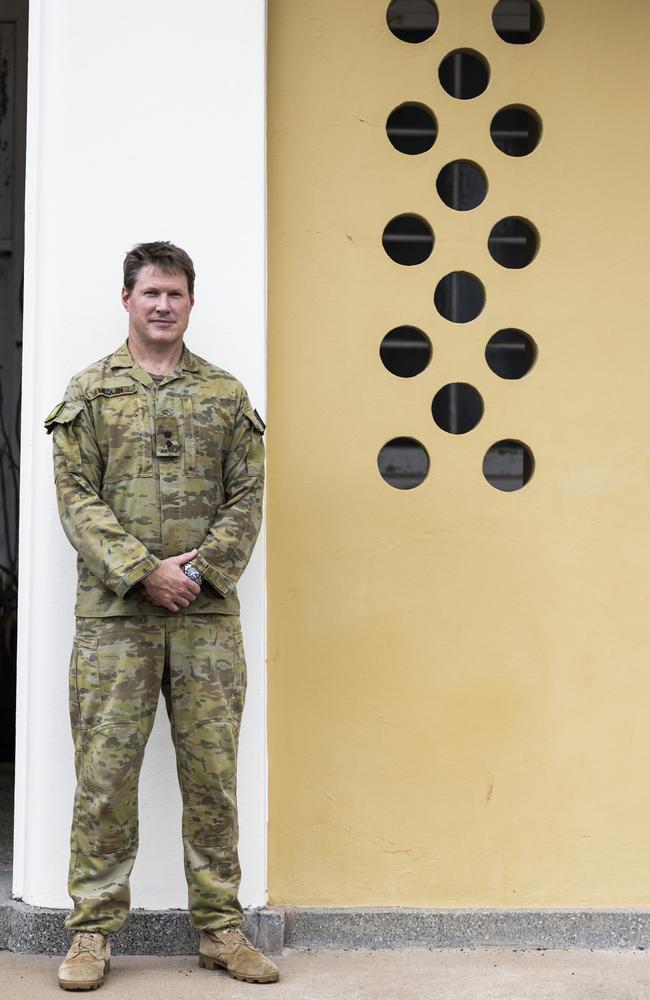
The threats were different but the capability gap was the same and the decision was made to re-raise such a force which the Army formally did in 1981.
“The genesis for creating it then was in the time of Cold War but it’s remained on that mission, the task of being the eyes and ears, remote, long range surveillance and reconnaissance for anything that’s happening that threatens the security of Australia ever since,” today’s Darwin-based Norforce commanding officer Lt Colonel Steve Medlin said.
“It’s been through evolutions of what’s been the priority from illegal fishing and illegal immigration (people smugglers), drug smuggling, all of those types of things, but we remain an essential part of Defence. We contribute to the whole of government security architecture for the North but we’re part of Defence and so we contribute to the defence of Australia with informing the senior leadership about anything of interest to them to make decisions for defence of Australia.”
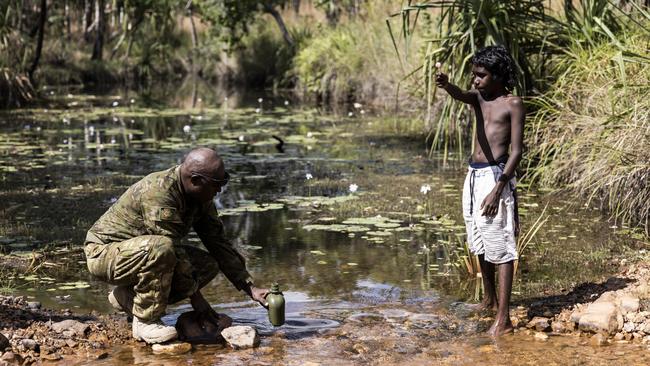
This interest according to the Federal Government these days include China with their military spy warships trawling for intelligence along Australia’s west, northern and eastern coastline and exploratory missions in the Arafura Sea, Torres Straits and deep into the Pacific.
Its regional flex already includes building a naval port in Cambodia, a dubious ‘fishing facility’ in Papua New Guinea and reportedly consideration now of a naval base in Solomon Islands and desire for “security pacts” with 10 other Pacific nations including Fiji.
Defence is coy on calling out its coercive adversaries such as China, preferring to leave that to the Federal Government.
But there is little doubt in the ranks there has been a step-up to its sense of urgency in training, buying new equipment and patrols on land, sea and air.
“We have a role to report on anything that’s there that is illegal activity or actions by anyone that would be something of Defence interest or security interest to both Defence and whole of government,” Medlin said.
‘ALWAYS ON’ AND ‘EVER VIGILANT’
Private Misman Kris remembers well his first contact with Norforce.
He was a small kid at his home in Warruwi (South Goulburn Islands) in the Arafura Sea to Australia’s north, when he would hear the Caribou aircraft coming into their local airstrip.
There stepping off would be his older brother James in uniform.
“I would run out of the class room and we would all yell ‘hey the army, the army’ and we all thought one day we will be on that plane and so yeah now I am,” the 41-year-old said.
“I joined six years ago and I put on my uniform and I thought yes I made it, my plan, my dream come true. I felt pretty proud putting on the uniform and I knew when I first got involved it would be a big challenge and I was looking forward to it. My daughter now says ‘dad I want to become like you, do what you do with Norforce’ so she has an idea.”
The motto for Norforce is ‘always on’ and ‘ever vigilant’ and there is a good reason for that.
He and his fellow troops see it as protecting country, not just Australia’s population now but the ancestral lands which are held in deep respect.
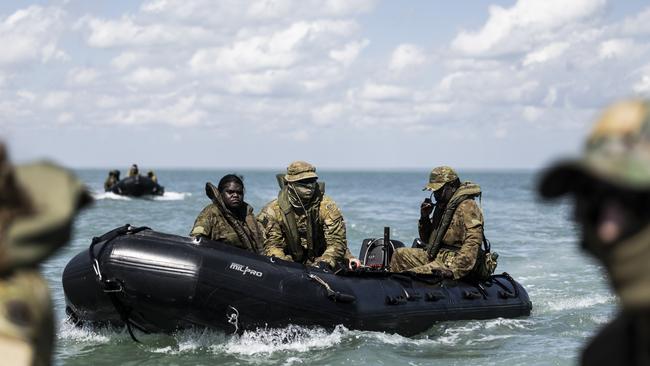
The word warrior is not one the ADF likes to use as a descriptor for its rank and file as it suggest a different type of soldier but in Norforce it is common place and relates to a traditional culture and status as ancestral protector for Australia’s mob now, regardless of skin colour.
The force’s indigenous element particularly are deeply rooted in the country and the remote communities that eke out an existence in the desert scrub or islands off the Northern Territory’s coast.
It is this connection, and significantly understanding of a regional language and dialect, that provides the backbone of Norforce’s intelligence gathering.
Darwin Squadron Officer Commanding Major Alan Bretherton said relationship building with the remote and regional communities is essential not just for intelligence but also as a recruitment ground for future troops.
He said the community connection by indigenous soldiers is as important as their bush craft knowledge.
“A lot of our information comes more from our relationships than from our physical reconnaissance itself, that’s important because our relationships with our communities really enable us to do our job,” he said.
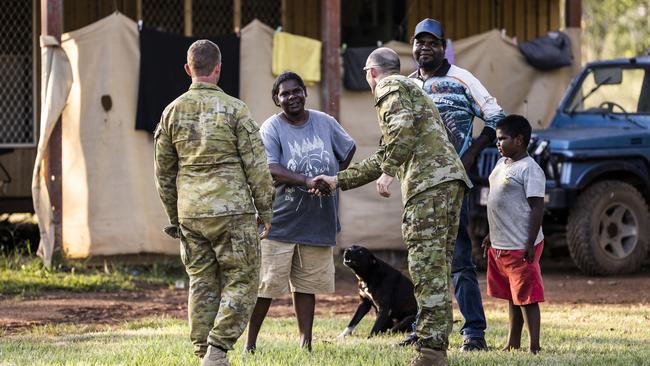
As the patrol track through the Daly River and Wudikapildyerr regions in the NT’s north west, locals come out in curiosity and for a chin wag.
They quickly talk about the conditions of roads ahead and swollen rivers and also airstrips that pepper the area, many largely created for WW2 and some still maintained just in case. It is here suspicious activity could include ‘black flights’ drug running in light aircraft, evidence of which has become prevalent in recent years.
The army in these parts carry respect largely for the indigenous troops in the squad some of whom come from the area or know people who are.
It is this fact on this long range patrol local elder Kenny Ahfat wants to give his blessing for the patrol to pass through the lands, a ritual that involves him drinking creek water and spitting out on top of each members’ head and also wiping his armpit sweat (of which there is considerable) onto each individual’s shoulders.
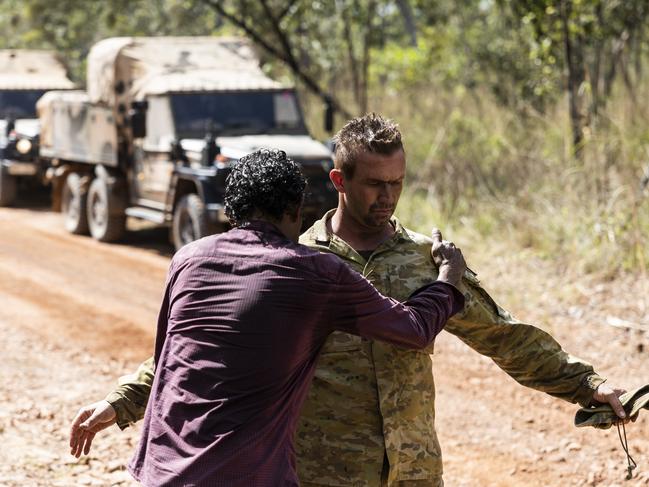
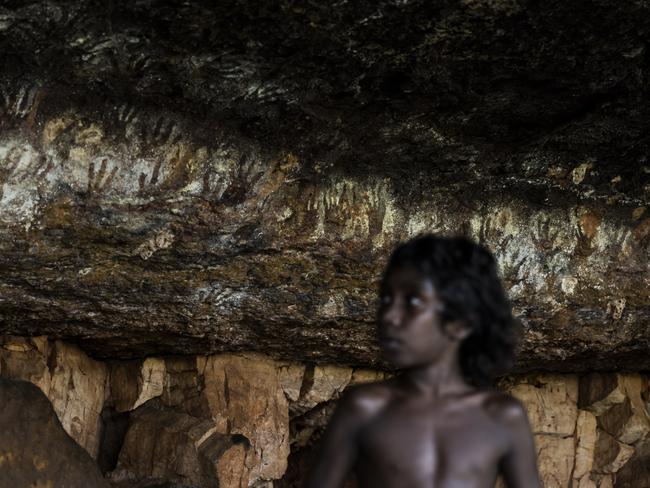
The blessing allows the squad to then travel to a rocky crag overhang, a sacred men’s site that includes hand prints and dot interpretation of a snakes; scientists who recently studied the uncovered site date it as 5000 years old. Many of the hand prints are missing fingers from historical hunting accidents of the past while another site nearby includes depictions of tall ships classed as Dutch trader from centuries ago.
“Our ancestors still walk here, big old man with long beard, fit as a fiddle, he is and his mob, he protect country, everything here protect … our food like jumping steaks (kangaroo) and snappy lizards (crocodiles),” says Kenny, as he pulls Billy Goat Plums or Gubinge fruit off a tree for natural vitamin C.
“Ancestors watch all the time but we help, Norforce too, they protect us and our life here, traditional here you know.”

Major Bretherton said the ADF teaches his troops traditional military skills like leadership, medical, driving on land or sea or surveillance the job is to understand how adversaries could use the area of operations to enter from the north and how Norforce could facilitate the rest of the ADF to deploy to that area if it needed to and for that the squad’s learning has another dimension.
“In Western culture we read books to learn but they learn to read the land, their books are the land and that’s what they know,” he said of his indigenous troops.
“It’s passed down through their stories and what they have is an uncanny ability to do is pick up on when something is out of place, that’s useful for us, they will point it out and we would not normally notice.”
That includes the location of crocodiles, wild boars and snakes and other daily hazards encountered.
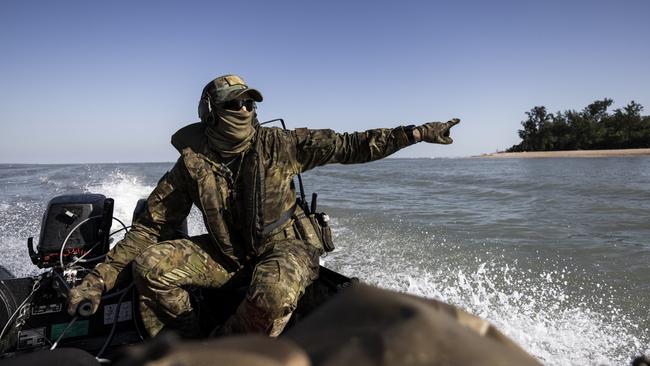
DREAM JOB
While in recent years the Australian public followed the actions of Australian troops in the Middle East, notably in Afghanistan and Iraq, at home daily operations were going unreported.
“For whatever reason it has been a well-kept secret but should be a well told story,” Lt Colonel Medlin said of Norforce.
Whether through the desert in their long range Surveillance & Reconnaissance Vehicle G Wagon, on foot or the Landing Craft Mechanised (LCM8) and inflatable zodiacs the force has been out there, somewhere patrolling Australia’s north.
In Milikapiti village in Tiwi Islands, local artist and former Norforce soldier Patrick Freddy Puruntatameri remembers his call out several years ago when a radar picked up a boat heading into his island inlets.
He rushed out and sat, watched and waited. Then on a beach “short Asians” emerged.
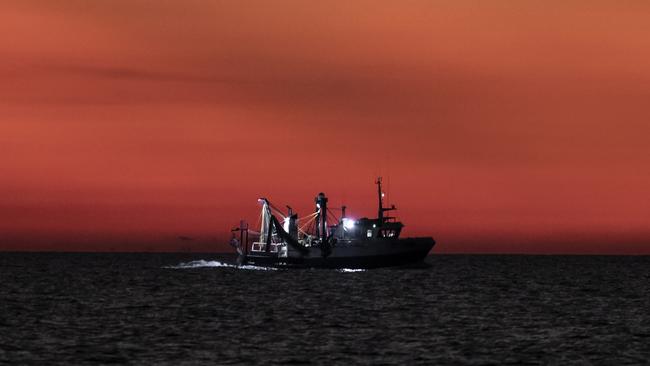
“They were yelling ‘Australia Australia’ all the time, a lot of commotion but we said ‘nah this is Tiwi,” he recalled. “They want asylum or what you call it. We had to keep them on the beach, pushed them back to stay on beach, we didn’t know if they had sickness … then the authorities came.”
It was on Tiwi Islands that Australia’s first prisoner of war was captured in February 1942 with a Japanese pilot whose aircraft was shot down taken prisoner by a ‘black watch’ indigenous man.
Now Patrick’s nephew Peter is in the force and cuts an imposing figure as he walks through the village as next gen Norforce reservist.
“I’m very proud, it’s important,” Peter said.
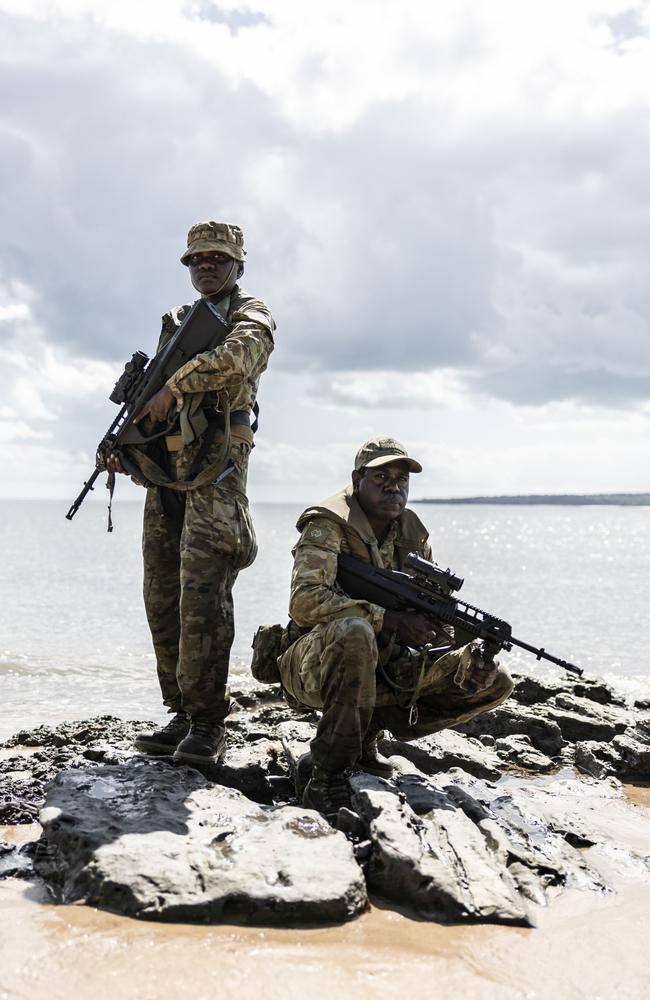
For Private Francelia Rankin it is a dream job.
“When I turned 13 family told me the stories of my great, great grand father and he was in the unit in the 1940s, he was a protector of our lands, a hero,” the 24-year-old said.
“I wanted to do something but we couldn’t then but later I saw some soldiers in the supermarket and I remembered to follow my dream and I did. When I’m not here I’m missing out … I’m the only daughter able to take care of family business, care for my mother in hospital but they are proud I do this. I want to study to be a medic, help everybody.”
In the force she says she is able to laugh and have fun with her cousin Private Blake Djammarr Carter, an association that would not occur outside of the Army.
The 35-year-old father of one joined in 2010, left to deal with ‘sorry business’ and rejoined in 2019.
“It’s given me so many skills, training and leadership that I use in civilian life,” the Norforce reservists who works in Darwin as an interpreter of six indigenous languages and a community housing officer.
He encourages others to sign up.
“Instead of doing negative things, wasting life, young people can be role models for our mob, protecting country,” he said.
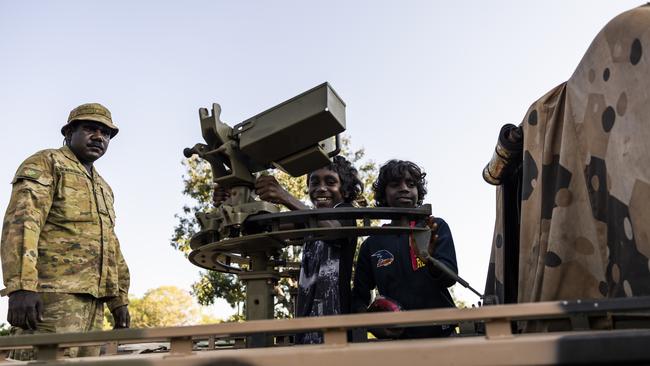
There are many tales of lives being turned around as the young indigenous some trapped in social dysfunction, generational unemployment or lives of violence return to their communities after training with a different spirit, outlook and purpose.
It would be unfair to call it a social service but in some ways it is, helping where some government services have failed. But it’s not about ‘closing the gap’, it’s a real military capability role and duty that works to benefit to community and whole of country.
They call it “capacity partnering” recognising each other has skill sets to help.
Barak Sombono, community leader and former Norforce patrolman, uses his influential local radio program to remind audiences the Army helps youth discover themselves, leadership and education skills they can apply to civilian lives and jobs.
“Nothing is peaches and cream and you have to go through the hard stuff to get to the end, train hard, I was shy wouldn’t talk to anyone … but it taught me responsibility, leadership, be a custodian of your land, speak out and you have to have the guts to do that … be a true military gentleman or woman … look at me now, I’m here not sitting around (Centrelink),” the award-winning DJ said.

There are about 600 reservists in Norforce or which a significant majority are indigenous.
With many rival indigenous clans, some openly hostile to others, there is an unspoken law in Norforce around the idea of ‘green skin’. Once the uniform is on, they are on, issues are set aside, just the one skin which is Army.
Also set aside are some of the strict requirements for broader ADF recruitment simply because some of the soldiers come from communities where there are no high schools for minimum level of education. But enlistment as patrolman or combat support operator is the same, learning two trades and a chance at further education.
But it’s more than that, it’s family.
Major Bretherton don’t hesitate to say some of the best experiences he has had in his career has come only just in the past few months since he became squadron officer commanding.
“The places we’ve been and things seen, they are just some of the best experiences,” the officer said.
“I am very fortunate also because I can leverage of the reputation that has been built upon for years based on the good work Norforce has done since its creation.
“It’s always been about caring for and protecting country for them (indigenous communities) and for us and for us (in Army) to take on that role and help them with that, is at the heart of the respect we mutually share.”

When proud Bama woman Lieutenant Colonel Eileen Hall talks diversity, it is not all black and white.
The recently promoted soldier is now the Army’s most senior indigenous female officer and is quick to point out there’s a third hue when a soldier puts on their camouflage uniform.
It renders them “green skin” and that’s why it works in Norforce – the Australian Defence Force’s most unique and diverse squads that despite being a critical component of national security, remains one of our least known.
Its members can literally be drawn from 255 distinct indigenous nations with 800 different dialects in Australia and together with its non-indigenous troops, its strength comes from setting aside differences of colour, clan or culture.
“It’s just country for country,” said Lt Colonel Hall, Army’s newly appointed First Nation’s cultural adviser from Wujal Wujal country in East Cape York in Queensland.
The ADF Regional Force Surveillance Group of which Norforce is one of four squads, has been around in one form or another for 80 years when formed in 1942 amid fears of a Japanese invasion.
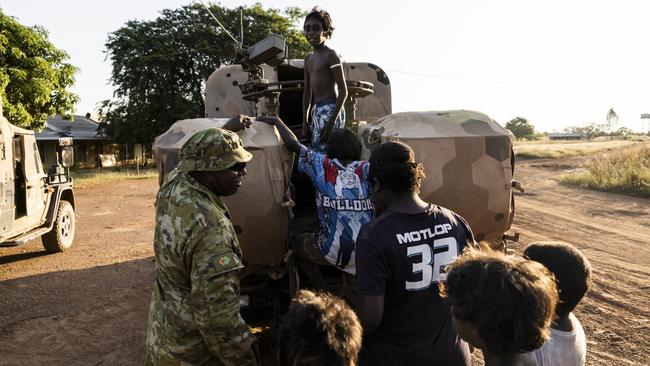
Today its threat targets are people smugglers, illegal foreign incursions, black flight drug smuggling and suspicious activity by any foreign entity mapping our islands and atolls, whether for fishing or a Chinese warship as was suspected last month off the Top End of WA and NT.
Norforce’s primary objective is surveillance, reconnaissance and intelligence gathering across 52 per cent of Australia’s land and seas, the largest area of operations for any military unit in the world.
Its strength is in its indigenous soldiers’ bush and survival craft to operate in the most inhospitable parts of Australia’s northern approaches as well as their connection to remote communities.
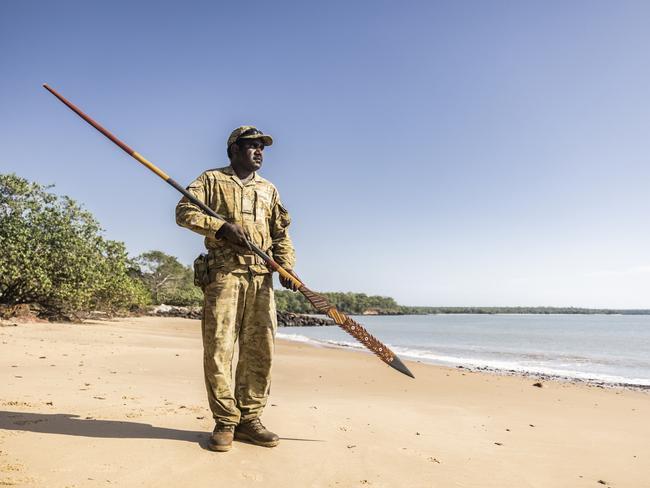
“One of the things we talk about culturally is if you eat from the same plate you’re family because if I don’t trust you, I won’t eat with you,” she explains.
“In culture law some of our communities’ languages may not have the word for friend – you are either family or stranger.
“So if we look at the stranger context, it’s particularly for unfinished business that might be like police for example or like children services or (government agencies), where there’s unfinished business. We’re not seen a stranger because we’ve all served (Army) or they have family that have served.”
She said the unit was geographically, culturally and linguistically diverse and that required unique training and operational regimens.
More Coverage
Originally published as Norforce warriors providing first line defence to Australia



